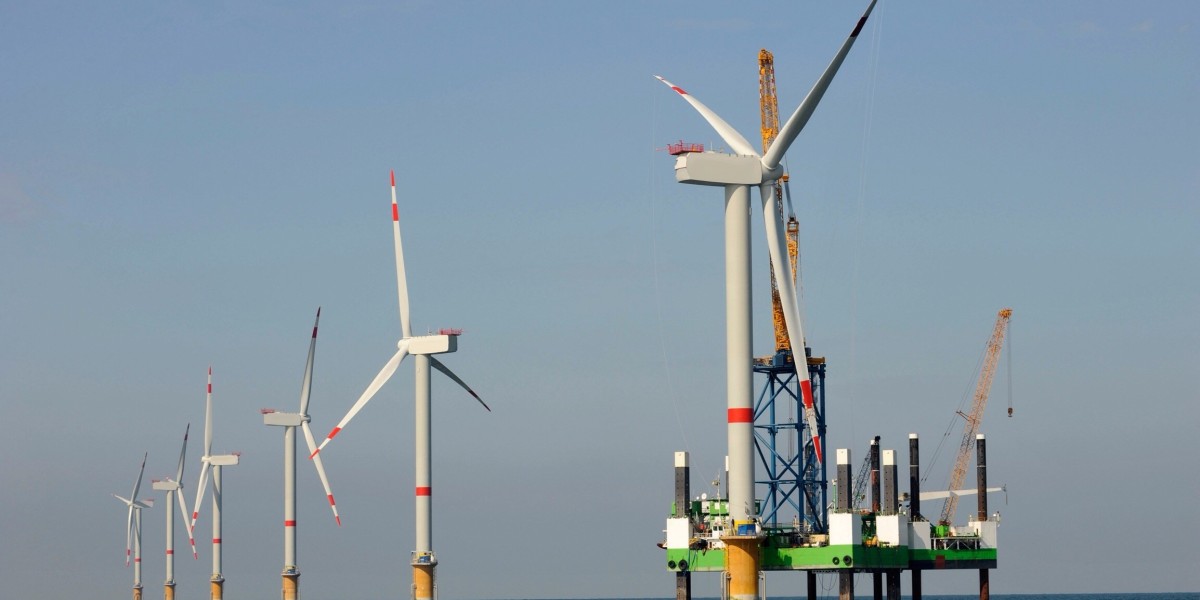The offshore wind energy market is rapidly emerging as a pivotal force in the global transition to clean, renewable energy. With advancements in technology, supportive government policies, and increasing demand for sustainable power, offshore wind is becoming a central player in efforts to combat climate change and reduce reliance on fossil fuels. The offshore wind energy market landscape is evolving, and a deeper look at its industry development highlights key trends, innovations, and opportunities that are shaping the future of the sector.
1. Industry Overview: Growing Momentum for Offshore Wind
Offshore wind energy refers to the process of harnessing the power of wind at sea to generate electricity using turbines located in bodies of water, typically far from shore. These turbines are often larger and more powerful than their onshore counterparts, taking advantage of higher and more consistent wind speeds found offshore. The global market for offshore wind is expanding rapidly, driven by the growing demand for renewable energy sources, increased government support, and advancements in offshore wind technology.
Global Growth and Market Dynamics
The offshore wind market has seen substantial growth in recent years, and this trend is expected to accelerate as more countries set ambitious renewable energy goals and establish supportive regulatory frameworks. Europe has been a leader in offshore wind energy, particularly in the UK, Germany, Denmark, and the Netherlands, which together make up a significant portion of global offshore wind capacity. However, other regions, including Asia-Pacific and North America, are also emerging as key markets for offshore wind development.
For example, China is investing heavily in offshore wind projects and has become a major player in the sector. The U.S. East Coast is also seeing rapid growth, with key projects like Vineyard Wind off the coast of Massachusetts signaling a new wave of offshore wind development in North America.
2. Technological Advancements: Paving the Way for Expansion
Technological innovation is a driving force in the offshore wind industry, enabling significant cost reductions and increased energy generation. As turbines become larger, more efficient, and capable of operating in deeper waters, the potential for offshore wind has expanded dramatically.
Larger and More Powerful Turbines
The trend toward larger turbines with higher capacities has significantly reduced the cost of offshore wind power. Today, turbines with capacities of 12 MW to 15 MW are becoming the norm, with manufacturers like Siemens Gamesa, GE Renewable Energy, and MHI Vestas pushing the boundaries of turbine size. These larger turbines allow developers to generate more power from each unit, resulting in greater economies of scale and lower energy costs.
For example, the Haliade-X from General Electric (GE) is one of the largest turbines in the world, with a capacity of 12 MW per turbine. These advancements not only increase the overall energy production of offshore wind farms but also make them more competitive with traditional energy sources, such as natural gas and coal.
Floating Wind Technology
One of the most exciting innovations in offshore wind energy is floating wind technology, which enables turbines to be placed in much deeper waters where traditional fixed-bottom foundations cannot be installed. Floating wind farms offer access to vast areas with high wind potential but no seabed to anchor turbines to. This technology is opening up new markets, particularly in regions with deep coastal waters like the U.S. West Coast, Japan, and parts of Southern Europe.
Floating wind turbines are still in the early stages of commercial deployment, but they have the potential to dramatically expand the geographical reach of offshore wind. Several floating wind projects are already operational, including the Hywind Scotland project, and more are expected in the coming years as the technology matures.
Smart Wind Farms and Digitalization
Offshore wind farms are increasingly adopting digital technologies to optimize operations and improve efficiency. Smart wind farms use sensors, AI, and machine learning to monitor turbine performance in real time, predict maintenance needs, and optimize energy output. These technologies help operators reduce operational costs and increase the lifespan of turbines.
Predictive maintenance is another area where digitalization is having a profound impact. By analyzing data collected from sensors and offshore platforms, operators can predict when a turbine or component might need maintenance or replacement, reducing downtime and extending the overall life of the farm.
3. Policy and Regulatory Frameworks: Key Drivers of Growth
Government policies and regulatory frameworks play a crucial role in driving the growth of the offshore wind energy sector. Many countries around the world are setting ambitious renewable energy targets and offering incentives for offshore wind development.
Financial Incentives and Subsidies
To make offshore wind more attractive to developers, governments are offering a range of financial incentives, including subsidies, tax credits, and guaranteed power purchase agreements (PPAs). These incentives reduce the financial risks associated with offshore wind projects, which require significant upfront capital investment.
In the UK, for example, the Contracts for Difference (CfD) scheme guarantees a fixed price for offshore wind power over a specified period, providing developers with predictable revenue streams. Similarly, in the U.S., Investment Tax Credits (ITC) and the Offshore Wind Credit (OWC) are designed to stimulate private investment in offshore wind projects.
Regulatory Streamlining and Permitting
Offshore wind projects can be complex, with long permitting and approval processes. To accelerate the development of offshore wind, many governments are working to streamline the regulatory process and reduce administrative hurdles. For example, the U.S. government is fast-tracking permitting processes for offshore wind projects along the East Coast, and the EU is aiming to cut approval times in half by 2030.
In addition to simplifying permitting, governments are also establishing national offshore wind plans and spatial planning strategies to identify optimal sites for development. These coordinated efforts are helping developers overcome challenges related to siting, environmental impact assessments, and marine spatial planning.
4. Market Challenges: Barriers to Growth
While the offshore wind market is on an upward trajectory, there are still several challenges that must be addressed to fully realize its potential.
High Initial Capital Costs
One of the most significant challenges in the offshore wind sector is the high initial capital investment required for turbine manufacturing, installation, and infrastructure. Offshore wind farms require large amounts of capital for construction, particularly when building in deep-water areas. While technological advancements have reduced costs over time, the financial barriers for smaller developers and emerging markets remain a concern.
Grid Integration and Transmission Infrastructure
Offshore wind projects are typically located far from shore, requiring complex and expensive subsea transmission systems to bring power back to land-based grids. Expanding and modernizing grid infrastructure to accommodate the influx of offshore wind power is essential for the sector’s growth. In some regions, like the North Sea, efforts are underway to build regional electricity grids that can connect multiple offshore wind farms, improving energy efficiency and market stability.
Environmental and Social Considerations
Offshore wind development can face opposition from local communities and stakeholders, particularly in relation to environmental concerns. The potential impacts on marine life, local fisheries, and coastal ecosystems must be carefully considered and mitigated. In addition, the construction of large-scale offshore wind farms may encounter resistance from other industries that rely on ocean space, such as shipping and fishing. Addressing these concerns through effective stakeholder engagement and environmental assessments is crucial for the continued growth of offshore wind.
5. Future Outlook and Opportunities
The future of offshore wind energy looks promising, with market analysts projecting continued growth in the coming decades. Key opportunities for expansion include:
New Geographies: Regions like Asia-Pacific, North America, and parts of the Middle East and Africa are emerging as major offshore wind markets. The development of floating wind farms is opening up new areas for deployment in regions with deep waters.
Supply Chain Expansion: As demand for offshore wind grows, there is a significant opportunity for the expansion of the supply chain, particularly in manufacturing, installation, and maintenance services. Localizing the supply chain can reduce costs and create jobs in coastal regions.
Hybrid Projects: The integration of offshore wind farms with other renewable energy sources, such as solar or wave power, could lead to more efficient and reliable energy production. Hybrid projects that combine offshore wind with energy storage could also help address intermittency issues and provide a stable power supply.



